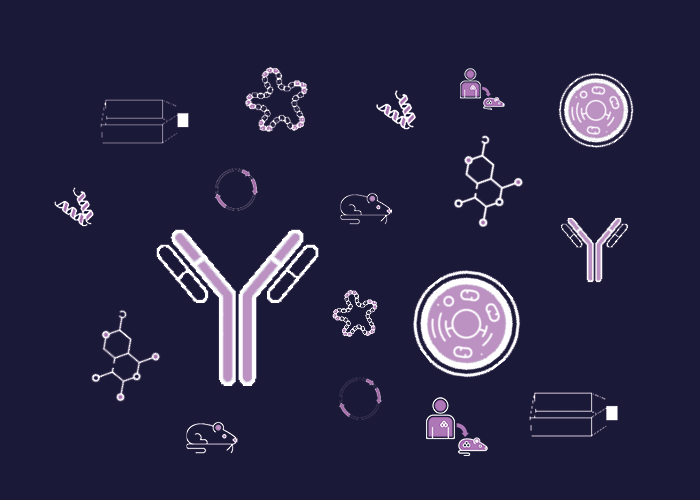
Cat. #153583
BMI-1 3 Cell Line
Cat. #: 153583
Sub-type: Primary
Unit size: 1x10^6 cells / vial
Availability: 10-12 weeks
Organism: Human
Tissue: Lung
Disease: Respiratory disease
Model: Extended Lifespan
£575.00
This fee is applicable only for non-profit organisations. If you are a for-profit organisation or a researcher working on commercially-sponsored academic research, you will need to contact our licensing team for a commercial use license.
Contributor
Inventor: Ian Sayers
Institute: University of Nottingham
Tool Details
*FOR RESEARCH USE ONLY (for other uses, please contact the licensing team)
- Name: BMI-1 3 Cell Line
- Alternate name: Polycomb complex protein BMI-1, polycomb group RING finger protein 4; PCGF4; RING finger protein 51; RNF51; B cell-specific Moloney murine leukemia virus integration site 1; BMI-1; FLVI2/PCGF4; Mo-MLV; Moloney murine leukemia virus; NHBEC; Normal Human Bronchial Epithelial Cells; pLVX-BMI-1 Cell Line: COPD, ALI; airÄË?Â?Âliquid interface
- Research fields: Cell biology;Cell signaling and signal transduction;Drug development;Genetics
- Tool sub type: Primary
- Organism: Human
- Gender: Male
- Tissue: Lung
- Donor: Male, 19 years old, Caucasian, non-smoker and consumed alcohol
- Disease: Respiratory disease
- Model: Extended Lifespan
- Description: Primary Human bronchial epithelial cells when grown in vitro have a limited lifespan and begin to deviate both in phenotype and morphology, losing the plasticity required around passage 4 or 5, for air-liquid interface (ALI) differentiation. These Human bronchial epithelial cells expressing BMI-1 retain both viability and differentiation potential of wild-type human bronchial epithelium while importantly not demonstrating changes in cell karyotype.B lymphoma Moloney murine leukemia virus insertion region 1 homolog (BMI-1) is an oncogene which functions by regulating P16 and P19 cell cycle inhibitor genes and is also associated with erythroplakia and tongue cancer. BMI-1 is thought to repress, p16(Ink4a), a cyclin-dependent kinase inhibitor and tumor suppressor that induces cell cycle arrest at the Gap 1 phase. BMI-1 can therefore be used to delay cell senescence. The airway epithelium is a critical interface acting as a barrier to potential pathogens and extraneous particles, assisting in regulation of host defense mechanisms like the inflammatory response.
- Production details: Passage 2 heterogeneous cells were plated in a 6-well plate at 5 x 10 4 cells per well and grown overnight. Media was replaced with 800 ul of media with 2 ug/ml of polybrene and 6.25 uL of lentivirus pLVX-BmI-1 to give >90% transfection. The plates were incubated at 37ÄÂ?°C for 6.5 h with gentle rocking and the media replaced after 2 hours. After 72 h, selection media containing 300 ng/mL puromycin was added and cells with antibiotic resistance after 6 days of selection were considered to...
- Additional notes: Cells were fixed for immunostaining, histology sectioning, and scanning electron microscopy after 28 days at ALI.
Target Details
- Target: BMI-1
Applications
- Application notes: Donor details: Male, 19 years old, Caucasian, non-smoker and consumed alcohol. Cells were fixed for immunostaining, histology sectioning, and scanning electron microscopy after 28 days at ALI.
Handling
- Format: Frozen
- Growth medium: Normal human bronchial epithelial cells were grown in a growth factor-supplemented medium and differentiated at ALI in bronchial epithelial differentiation medium.
- Unit size: 1x10^6 cells / vial
- Shipping conditions: Dry ice
Related Tools
- Related tools: BMI-1 5 Cell Line ; BMI-1 1 Cell Line ; BMI-1 4 Cell Line ; BMI-1 6 Cell Line ; BMI-1 2 Cell Line
References
- Torr et al. 2016. Physiol Rep. 4(16):. PMID: 27558999.
- Expression of polycomb protein BMI-1 maintains the plasticity of basal bronchial epithelial cells.



